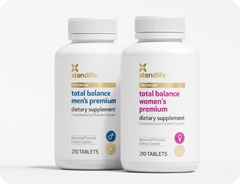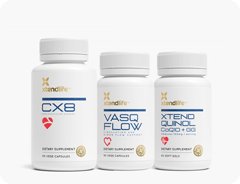Specifically I discovered:
- How prevalent poor oral hygiene and health are.
- That there is a close relationship between oral health and general wellbeing – especially cardiovascular and heart health.
- Insights into what may be the “real” causes of dental cavities and gum infection.
I thought these revelations may interest you, too.
1. Prevalence of Oral Ill Health
According to The World Health Organisation - WHO - (ref. 1): “Oral health is essential to general health and quality of life… Worldwide, 60–90% of school children and nearly 100% of adults have dental cavities, often leading to pain and discomfort. 15–20% of middle-aged adults have severe periodontal (gum) disease.
In the USA, the National Institute of Dental and Craniofacial Research (ref. 2) claims that: "Dental caries (tooth decay) remains the most prevalent chronic disease in both children and adults." Additionally, the Centers for Disease Control (ref. 3) claim that: "One out of every two American adults aged 30 and over has periodontal disease."
Such statistics are pretty shocking in themselves. Of equal concern, are the effects on our general health, as the WHO indicated in their quote “Oral health is essential to general health and quality of life.”
In fact there are several studies showing how oral health may have a significant impact on cardiovascular and heart health.
2. The Potential Impact of Oral Health on Cardiovascular Wellbeing
Medical News Today (ref. 4) reports how researchers at Columbia University in New York suggest that if you look after your gums, you may also reduce your risk of heart disease. They claim that improving dental care slows the speed at which plaque builds up in the arteries.
The researchers also refer to a study which shows how “improving gum health may be linked to a clinically significant slower progression of atherosclerosis”. Atherosclerosis involves plaque builds up in arteries, potentially increasing a person's risk of heart disease.
Co-author Professor Papapanou at Columbia's College of Dental Medicine says: “Our results show a clear relationship between what is happening in the mouth and thickening of the carotid artery, even before the onset of full-fledged periodontal disease. This suggests that incipient periodontal disease should not be ignored.”
These results confirm an earlier Scottish 2010 study (ref. 5). This study concluded that those with the worst oral hygiene increased their risk of developing heart disease by a significant 70%, compared to those who brush their teeth twice a day.
Based on the results of the Scottish study, the researchers suggest that: “Systemic inflammation could represent the underlying mechanism linking oral health and cardiovascular disease.”
Other than systematic inflammation what else may be causing such poor oral health?
3. Key Causes of Tooth Decay and Gum Disease
If you’re like me, you may remember your parents’ warning about the damaging effects of sugar on your teeth. Yet I also recall how odd it seemed that despite brushing my teeth regularly, I still got loads of cavities.
Maybe Dr Judd can help explain this apparent paradox.
In his book “Good Teeth, Birth to Death”, Dr. Judd describes the chemistry at the root of tooth decay, cavities and gum disease. He claims that there is: “An overwhelming amount of dental research which proves the following…” (ref. 6):
- “Sugars (fructose, glucose, and sucrose) are incapable of having any action on tooth enamel, and of dissolving calcium phosphate. This is because the chelation process of sugar toward teeth is slow due to the large size of the molecule and to the particular shape of the chelate formed. “
- “Only acids which are introduced into the mouth from food and drink can erode tooth enamel (calcium hydroxy phosphate), and cause cavities. Protons of the acid quickly pull phosphate from the enamel. Food and drink not containing acids have no action on tooth enamel.”
- “Harmful acids (with a pH <4.0) which attack the enamel include lemons, grapefruit, oranges, pineapple, kiwi, tomatoes, vinegar, cider, vitamin C (especially chewable) and stomach acid. The lower the pH, the more rapidly acids attack.”
- “When acids are properly removed from the teeth, cavities do not occur. Removal of acids is easily accomplished by sipping water or other non-acidic liquids while eating. The acids quickly react chemically with the liquids to form hydronium ions, thereby saving the enamel.”
- “Dietary or supplemental calcium and phosphate result in tooth re-enamelization, but only when the teeth are clean. Re-enamelization is necessary on a daily basis as enamel leaches slightly with water over decades, even in the absence of acid. Without re-enamelization, having healthy teeth is not possible.”
- “Toothpastes containing glycerine, which most do, are very sticky, requiring over 20 rinses to remove it from tooth surfaces. Glycerine-containing toothpastes leave a residual film, preventing the teeth from proper re-enamelization.”
- “Bacteria are not capable of having any action on tooth enamel. That’s because enamel contains no carbon or hydrogen upon which bacteria subsist.”
- “Although bacteria do not cause cavities/decay, they are a source of irritation and inflammation which may lead to gum infection (Gingivitis).”
- “Gingivitis is usually caused by plaque, a bacteria-containing crystalline structure that adheres to the outside of tooth enamel. Bacteria contained in the plaque accumulate in the small gaps between the gums and teeth, producing toxins that cause inflammation of the gums around the teeth. Over time, inflammation can cause deep pockets between the teeth and gums and loss of bone that anchors the teeth - a condition known as periodontitis.”
- “Gum pockets are formed not only when plaque pushes the gums away from tooth surfaces, but also by toothpaste containing fluoride (or when fluoride is introduced into the oral cavity by other means). This severs the protein molecules that bind the gums to tooth surfaces.”
- “Fluoride in water at one part per million (ppm) increased tooth cavities in four large, reliable studies (7%, 22%, 45% and 10%-averaging 21%). “
Thanks Dr Judd for revealing that!
As you can see from all the above information, the health of your teeth and gums are a reflection of your general health and good oral hygiene. They in turn result from a balanced lifestyle including supplementation.
4. What Supplements are Best for Teeth and Gum Health?
Some effective natural remedies and supplements for gum disease include:
Cayenne pepper
Cayenne pepper, which is rich in capsaicin, is known for its pain and swelling reduction properties (ref. 7). Cayenne helps to reduce gum swelling by stimulating circulation in the gums. This in turn may help to push out bacteria which can't be reached by mouthwash, flossing or brushing.
Goldenseal / Corktree
Goldenseal has been called “A natural antibiotic for gum disease” courtesy of its antimicrobial properties (ref. 8). It is very similar to the corktree extract because it contains berberine. . Berberine may have – antimicrobial effects against streptococcus and other bacteria.
Myrrh (Guggul gum extract)
Myrrh is widely considered to be one of the most effective substances for sore gums by herbalists and by Chinese medicine practitioners. Even in the West it is renowned for its astringent and antiseptic properties as well as for promoting healing. It is “so antiseptic” that it was used for embalming and mummifying Egyptian Pharaohs (ref. 9)
You could use these three herbs to help eliminate gum disease by mixing equal parts of each into a small container. Sprinkle some of the mix onto a wet toothbrush and brush twice a day. Just use a small amount of toothpaste to help the herbs adhere to the toothbrush. Don’t worry if the cayenne and goldenseal cause a slight burning or tingling sensation. It is normal and goes away quickly
Omega 3 Fatty Acids
In addition to the above, we must not forget Omega 3 fish oil. Nutra Ingredients USA (ref. 10) describes several studies showing how Omega 3 fatty acids may have both anti-inflammatory and anti-bacterial benefits in oral health. Specifically: “The new study found that a moderate dietary intake of Omega 3 polyunsaturated fatty acids DHA and EPA were associated with a decreased prevalence of periodontitis of up to 20%.”
If you are not already taking it, this knowledge may prompt you to try what is arguably one of the most effective Omega 3 fish oils on the market today - our Omega 3 fish oil range (ref. 11)
We hope that this article has given you a greater appreciation of how important it is to look after your oral hygiene and health. A “bright shiny smile” and healthy gums say more about your general wellbeing then you may have thought!
References:
- For details on the WHO’s information about global oral health see http://www.who.int/mediacentre/factsheets/fs318/en/
- The National Institute of Dental and Craniofacial Research presents their data on oral health at: http://www.nidcr.nih.gov/datastatistics/finddatabytopic/dentalcaries/
- The American Academy of Periodontology reports data from the Centres of Disease Control about the prevalence of periodontal disease https://ca.edubirdie.com/blog/cdc-study
- For the report by Medical News Today see http://www.medicalnewstoday.com/articles/268325.php
- The results from the Scottish Health Survey: “Toothbrushing, inflammation, and risk of cardiovascular disease” can be seen at http://www.bmj.com/content/340/bmj.c2451
- For Dr Judd’s book, see: “Judd, Gerald. Good Teeth, Birth to Death: The Prescription for Perfect Teeth. Gerald Judd, 1997.”
- This article shows how to use cayenne pepper to help relieve gingivitis symptoms http://www.livestrong.com/article/373319-how-to-heal-gum-disease-with-cayenne-pepper/
- The historical use of goldenseal to help reduce sore gums is explained here http://www.livestrong.com/article/288304-natural-antibiotic-for-gum-disease/
- For information on how Myrrh may be used as a natural dental care product, see http://www.good-gums.com/ingredient-myrrh.cfm
- To read about some studies which show how “Omega-3 may reduce gum disease" see http://www.nutraingredients-usa.com/Research/Omega-3-may-reduce-gum-disease-Study
- More information about our Omega 3 fish oils can be seen at /products/omega-3-dha-childrens


 Supplements
Supplements Skincare
Skincare Superfoods
Superfoods Bundles
Bundles














Thanks for your question Charles
Please see reference 6 above: "For Dr Judds book, see: Judd, Gerald. Good Teeth, Birth to Death: The Prescription for Perfect Teeth. Gerald Judd, 1997.
Kindly
Caramia
Xtend-Life Expert October 23 2014